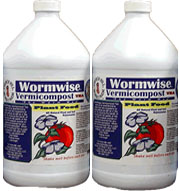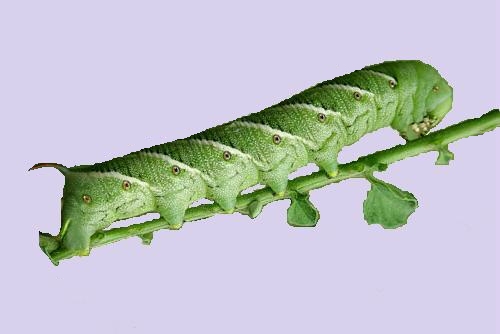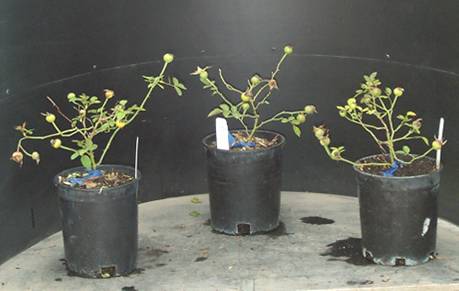
My not-fan Justin has emailed me again with some more substantial comments of my criticisms of compost tea. I’ve posted his email here, along with my responses in a point-counterpoint format:
1. “Compost teas do vary from batch to batch, the same way galaxies vary. Without the complexity and biodiversity present in the tea, you might as well just be using water.”
Yes, they do vary, and this is why it is so difficult to conduct replicated and repeatable studies on the efficacy of compost tea. The comparison to variability in galaxies is really not relevant, nor is it conducive to experimentation.
2. “Generally speaking though, this can be overcome by the purchase of virtually any microscope capable of achieving 400x field of vision or greater. By looking at what is present in the tea and a little bit of background knowledge, one can make an educated decision as to whether or not it will improve conditions on one’s plants and soil.”
Purchasing a microscope does not overcome variability. Furthermore, microbial species can’t be reliably identified simply by looking at them under a microscope. The “little bit of background knowledge” is vague. What, exactly, will help in making the “educated decision” in whether it will do any good to use it?
3. “I assume that these steps were not taken in these experiments, because of the generally lacking method in what has been come to be labeled (tobacco science).”
The steps referred to (I assume in point 2) are not useful in assessing efficacy of a product – in other words, demonstrating an effect not seen in the control treatment. What would be the control? Not looking under a microscope? Not having background knowledge? An experiment requires experimental variables. I hadn’t heard of “tobacco science” and had to look it up. Apparently it’s “science that is skewed or biased, especially toward a particular industry.” The only industry I see in this discussion is the compost tea industry – and yes, it’s an industry.
4. “First of all you are trying to disprove compost tea as a foliar pesticide only. You do not do a relatively new science justice by not looking at the wholeness. Any and all foliar applied pesticides are palliative in nature, and symptoms will recur if you do not deal with the source problem. Compost tea (aerated) is to be used in the rhizosphere first, foliage second, and surrounding environment third. If you are not talking about this mode of application, you are not talking about compost tea.”
Compost tea is not a new science. It is a product. To demonstrate efficacy of a product requires conducting a controlled experiment in which there are one or a few variables. It’s not possible for science to look at the “wholeness” of compost tea – it has to be looked at systematically. Neither is compost tea defined by its mode of application.
I do agree with Justin, however, that symptoms (of disease or whatever) will recur if the underlying problem isn’t addressed. There are scientifically testable, consistently reliable methods for improving soil health and plant health. At this point, compost tea is not one of them.
5. “In order to disprove compost tea, you must first explain to the reader how balances of microbial life (bacteria, fungi, protozoa, nematodes, microarthropods, earthworms) are different in various stages of ecological succession. You must describe how the OVERALL HEALTH of any plant depends on how it has evolved to live in the soil conditions in which it is planted. You must describe how human activity effects soil food webs and how soil disturbed or treated with substances toxic to microbial life will move the soil backwards in succession. This will create a soil that favors weeds over crops by reverting the soil to bacterial dominance.”
Disproving any hypothesis (e.g. “compost tea prevents foliar disease) relies upon scientific evidence. What Justin is asking for is not experimental but explanatory. (There are several inaccuracies in what he outlines above, but in the interest of sticking to one topic I’m ignoring them.)
6. “If you are going to debate compost tea you must disprove its ability to create a more fungal soil and inoculate the rhizoshpere with arbuscular mycorrhizae, improving soil born nitrogen. Excuse me, soil born proteins in the form of microbial biomass that are released as ammonium or nitrates in detritus, when consumed by predatory microbes, that are generally found to be lacking in human disturbed soils.”
The first point is incorrect, and is one of the hallmarks of pseudoscience – reversed burden of proof. It is up to proponents of compost tea – or any other product or practice – to demonstrate efficacy. (Wikipedia has an excellent overview of the characteristics of pseudoscience.)
7. “You must prove: that most garden or Ag soils have a stable food web, the food web is not necessary, or that compost tea does not create a more complete food web. You must create a fair experiment (not paid for by cargill) that tests foliar applications on crops planted into a healthy rhizosphere with a complete food web.”
No. Compost tea proponents must demonstrate that compost tea has an effect. Period. (It’s also important to understand that science doesn’t “prove” anything. It either supports a hypothesis or disproves it. That’s why scientific inquiry is a dynamic process – you never know when new evidence will lead to a paradigm shift.)
8. “If you cannot present your findings in this way, you are misleading your readers knowingly. I was raised to classify that as a lie.”
I don’t conduct these compost tea experiments (though I do conduct research in other areas). Part of my job as an extension educator is to read the scientific literature and translate it for use by nonscientists. I have posted an extensive bibliography of the compost tea literature on my web site. If I were either deliberately or accidentally misleading anyone, I would be in serious trouble with my university. Given that I started my criticism of compost tea on my web site over 10 years ago, it’s likely that the information is not misleading.





